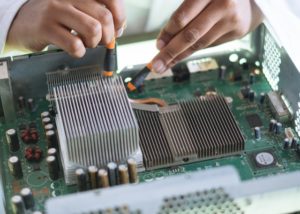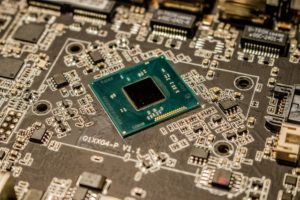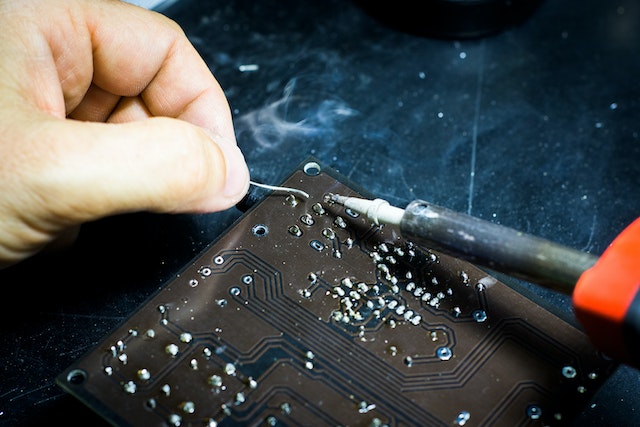Silicon Carbide as a Material for Radiation Hardness
Understanding the Radiation Resistance of SiC
The esteemed Silicon carbide (SiC), is widely celebrated for its exceptional radiation hardness, an attribute that renders it perfect for applications in particularly challenging environments. It’s this particular characteristic of SiC that proves invaluable in the world of radiation detection – a realm where devices are ceaselessly subjected to extreme levels of irradiation. The inherent resilience exhibited by SiC against these conditions without notable performance deterioration sets it distinctly apart from other commonly employed materials.

One can trace the extraordinary radiation hardness of silicon carbide back to its unique crystal structure and chemical bonds. Upon being exposed to proton or electron beam irradiation, the formidable covalent bonds within the SiC crystal lattice remain predominantly unscathed. This stands in stark contrast with numerous other materials which experience dramatic structural shifts under similar circumstances; yet, remarkably, SiC retains its integrity even after exposure to such high-intensity beams. This resistance against damage significantly bolsters the overall durability as well as lifespan of detectors constructed from this material.
In addition to all this, research has indicated minimal effects on SiC due to both proton and electron irradiation over prolonged periods – further underscoring the appropriateness of employing SiC as a detector material amidst environments plagued by high radiation levels. Despite enduring incessant exposure to harsh irradiation conditions, detectors fashioned out of silicon carbide continue their optimal operation without any discernible downturn in either their performance or efficiency.
Proton and Electron Irradiation Effects on SiC
In the realm of radiation detection applications, Silicon carbide (SiC) garners attention due to its distinct attributes. It boasts a broad bandgap, an elevated atomic number and an inherent resilience against radiation – making it a prime candidate for detectors in harsh conditions such as cosmic environments or nuclear reactors. The response of SiC detectors when subjected to proton and electron irradiation is an essential field of exploration.

The impact of proton and electron irradiation on SiC spins a complex narrative. As these particles engage in collision with the SiC detector, it results in silicon and carbon atoms being forcefully detached from their lattice sites which consequently births defects capable of trapping charge carriers. This encounter modifies the electrical traits of devices crafted from this material – schottky diodes being one such example often employed within radiation detection systems due to their susceptibility towards ionizing radiations. For instance, exposure to proton beam or electron bombardment may result in alterations observed in parameters like leakage current or reverse breakdown voltage if you consider a Schottky diode created from SiC.
However, despite these modifications brought about by irradiation-induced flaws, the overall functionality remains predominantly unaffected owing greatly to extraordinary resistance property inherently present within SiC materials. It’s worth noting that while some degradation does inevitably transpire over time with continued exposure – particularly at escalated energies – it tends not be catastrophic but rather gradual; affording ample opportunity for preemptive maneuvers if necessary during long-term usage scenarios where ceaseless exposure cannot be avoided.
These insights further accentuate how vital comprehending these interactions between protons/electrons and silicon carbide is key towards refining future designs purposed for deployment within challenging environments involving intense levels of ionizing radiations.
The Role of SiC in Radiation Detection
Radiation detection finds an invaluable ally in the form of Silicon Carbide (SiC), owing to its distinctive characteristics. The noteworthy radiation resistance of SiC sets it apart as a perfect candidate for deployment in severe environments teeming with intense radiation and soaring temperatures. This hardiness under extreme situations allows devices based on SiC to deliver consistent performance, even when subjected to harsh radiative stress.
Silicon Carbide’s efficacy in radiation detection is further bolstered by another crucial factor – the endurance of silicon carbide Schottky diodes against irradiation. Displaying extraordinary resilience under exposure, these diodes retain their functionality where other materials might succumb or falter. Indispensable roles have been carved out for Silicon Carbide Schottky Diode Detectors across diverse applications necessitating operations at elevated temperatures and within acute radiation fields.
In-depth examination into how these detectors react to radiation has yielded encouraging findings, particularly pertaining their use in D-T fusion neutron detection realm. In comparison with conventional detectors, Schottky diode detectors demonstrate superior capabilities within D-T fusion due largely to their innate capacity for enduring high concentrations of neutron flux sans notable decline over time. This tenacity further accentuates the potential worthiness of Silicon Carbide as a preferred material selection for forthcoming iterations of radiation detectors intended for utilization within D-T fusion neutron spheres.
The Study of SiC Detector Performance Under Irradiation
In recent epochs, Silicon Carbide (SiC) has been the cynosure of noteworthy interest, its superior attributes have made it a subject of much intrigue especially in its role as a radiation detector. The inherent virtues of SiC such as its high displacement threshold energy and wide bandgap mark it out as an optimal choice for applications involving radiation detection. Of particular import is the study into how well SiC detectors function under irradiation conditions.
By delving into parameters like carrier removal rate, we can gauge the reaction of SiC detectors to proton and electron irradiation. This parameter serves as a measurement tool that reflects the decrease in charge carriers within the material used for detection when exposed to ionizing radiation. A spike in carrier removal rate is indicative of escalated damage levels within this material which could considerably influence its overall effectiveness.
In order to untangle this complex labyrinth further, there’s been a proliferation of research aimed at understanding how various types and doses of irradiation affect performance characteristics intrinsic to SiC detectors. These scholarly pursuits have unveiled that while there may be some decline in efficiency over time owing to increased carrier removal rates – these devices maintain their operational prowess even amidst high-radiation environments. They are remarkably resilient where traditional silicon-based detectors falter or demonstrate compromised functionality – thus underscoring their potentiality as robust sic tools adept at detecting radiation.




Comments are closed.